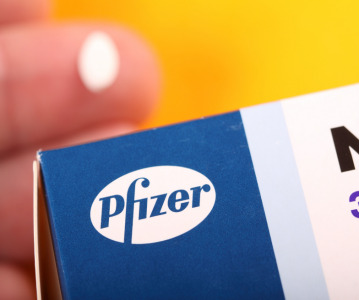Experts warn trade and patent changes could increase healthcare cost by $100bn over next 5 years

China is harmonizing to ICH standards at feverish pace and will force poor quality manufacturers out of market.
CPHI Worldwide has released the second part of its annual report, which evaluates the effects of regulatory divergence, trade agreements and IP rights over the next 5 years. Two annual report experts, Dilip Shah, CEO of Vision Consulting Group, and Bikash Chatterjee, President and Chief Science Officer at Pharmatech Associates review the impact of ‘IPRs and trade agreements’ and ‘regulatory divergence’ respectively, suggesting the implications of both could have profound impacts globally.
Dilip Shah argues strongly that the global trend towards patent term restoration and extension will result in patients needing to wait an extra 5 or 10 years to access generic versions of medicines. In many cases Regional Comprehensive Economic Partnership (RCEP) texts seek to redefine the protection period to 20 years from the date of marketing approval. “For example, ‘Patent linkage’ under Comprehensive and Progressive Trans-Pacific Partnership Agreement (CPTPP) will require [generic company] to gain consent from patent holder prior to use of data in (generic) marketing approval. CETA between the EU and Canada has similar patent restoration as does EU-Japan economic partnership agreement,” commented Shah.
Yet, Shah believes this may result in longer term consequences for the industry with consumers and governments ultimately forcing a fundamental reform of how medicines are reimbursed. Over the course of the next 5 years, he forecasts that healthcare costs could rise globally by as much as $100 billion. The implications for the patented pharma industry is that it is likely to come under sustained pressure in the medium term (5-10 years hence) to reduce prices.
Bikash Chatterjee in his paper on ‘regulatory philosophy divergence and innovation convergence in the next decade’, predicts China’s rate of advancement is still accelerating and that we can very quickly expect full harmonization with ICH standards. The net result will be that China’s overall standards will improve quickly and poor quality manufacturers will drop out of the market in the next 2 to 3 years.
Globally, he foresees that although regulators are actively diverging in their philosophies, technology and innovation is simultaneously converging – with frameworks grounded in scientific tools and analytical techniques. For example, process validation in the future will be completed for individual patients, not batches. CAR-T and NGS have opened a potential regulatory pathway for even 3-D bioprinting of organs to follow.
“We have seen ground-breaking drug therapies and diagnostics approved in the last 5 years that position regulatory bodies to embrace these new innovations. Whether risk is managed via enhanced control and oversight, such as with the EUs GDPR legislation, or is a by-product of intelligently gathered real-world data, as provided under the US’s 21st Century Cures Act, the regulatory evaluation in each framework required to evaluate these new technologies will be grounded in today’s scientific tools and analytic techniques. Technology is playing an increasingly large role in improving rates of attrition. Over the next 5 years, big data will catalyse drug discovery with R&D leading to quicker advancement of more targeted therapies” added Chatterjee.
The full findings of the CPHI Annual Report will include 12 in-depth expert contributions as well as the CPHI Manufacturing and Bio leagues tables, which will evaluate the relative reputations of each major pharma country.
CPHI Brand Director Europe, Orhan Caglayan added: “CPHI Worldwide, where 45,000 executives combine their knowledge, is widely seen as a bellwether of industry trends and analysis. Our Annual Report experts show China is now making great strides in harmonising with international standards, so it will be interesting to see over the next few years whether its reputation in our annual report league tables continues to improve. However, the effects of patent extensions while clearly beneficial for Big Pharma may mean there are a number of late entering generics companies. But what is most exciting is the impact big data could have on bringing process improvements to market as well as in drug discovery. In fact, this year we are specifically holding sessions exploring the impact big data, machine learning and digital will have on pharma over the years ahead. The vastly expanded content agenda will address many of the opportunities and threats across both bio and small molecule industries.”
Related News
-
News Pfizer may shift production back to US under Trump pharma tariffs
At the 45th TD Cowen annual healthcare conference in Boston, USA, Pfizer CEO Albert Bourla outlined the potential for Pfizer to shift its overseas drug manufacturing back to the US as pharmaceutical industry players weigh their options against Presiden... -
News Women in Pharma: Connecting accessible pharma packaging to patients – a Pharmapack Special
Throughout our Women in Pharma series, we aim to highlight how CPHI events encourage discussions around diversity, equity, and inclusion initiatives in the pharmaceutical industry. -
News CPHI Podcast Series: Packaging expert perspectives at Pharmapack 2025
This month's podcast episode sounds a little different, covering the latest event in Paris – Pharmapack 2025. Digital Editor Lucy Chard speaks to several experts direct from the floor of the show, bringing you right in on the action.&nbs... -
News Closing 2024 with Editors' picks of top articles from the past year
Coming to the end of 2024 and it’s certainly been a busy year, for CPHI and for the rest of the pharmaceutical and healthcare industry. Topics of conversation throughout the last 12 months have been varied, touching on the technical, to the polit... -
News SCHOTT Pharma’s sustainable journey with CPHI
Sustainability is of paramount importance in the pharmaceutical industry. See how a recent partnership between CPHI and SCHOTT Pharma has helped to highlight and accelerate their sustainability journey to reach global goals. -
News CPHI Podcast Series: Investing in a vision for the future of life sciences
In this episode Lucy Chard is joined by Rajiv Khatau to discuss the importance of looking into new therapeutic areas and some of the more niche areas of pharmaceuticals, and investing in the future of the industry. -
News Lessons from CPHI Milan 2024: Sunny Intervals for Pharma Manufacturing?
As the 2024 CPHI conference wrapped up in Milan, we caught up with L.E.K. Consulting – a global strategy consulting firm with deep expertise in pharma manufacturing – to discuss evolving market perspectives and business outlook. -
News Women in Pharma: Reflections from Behind the Scenes
In this instalment of our monthly series, the team that brings you the Women in Pharma series each month sits down for a heart-to-heart on what the series means to them, and how they hope to continue their work in the future.
Position your company at the heart of the global Pharma industry with a CPHI Online membership
-
Your products and solutions visible to thousands of visitors within the largest Pharma marketplace
-
Generate high-quality, engaged leads for your business, all year round
-
Promote your business as the industry’s thought-leader by hosting your reports, brochures and videos within your profile
-
Your company’s profile boosted at all participating CPHI events
-
An easy-to-use platform with a detailed dashboard showing your leads and performance







